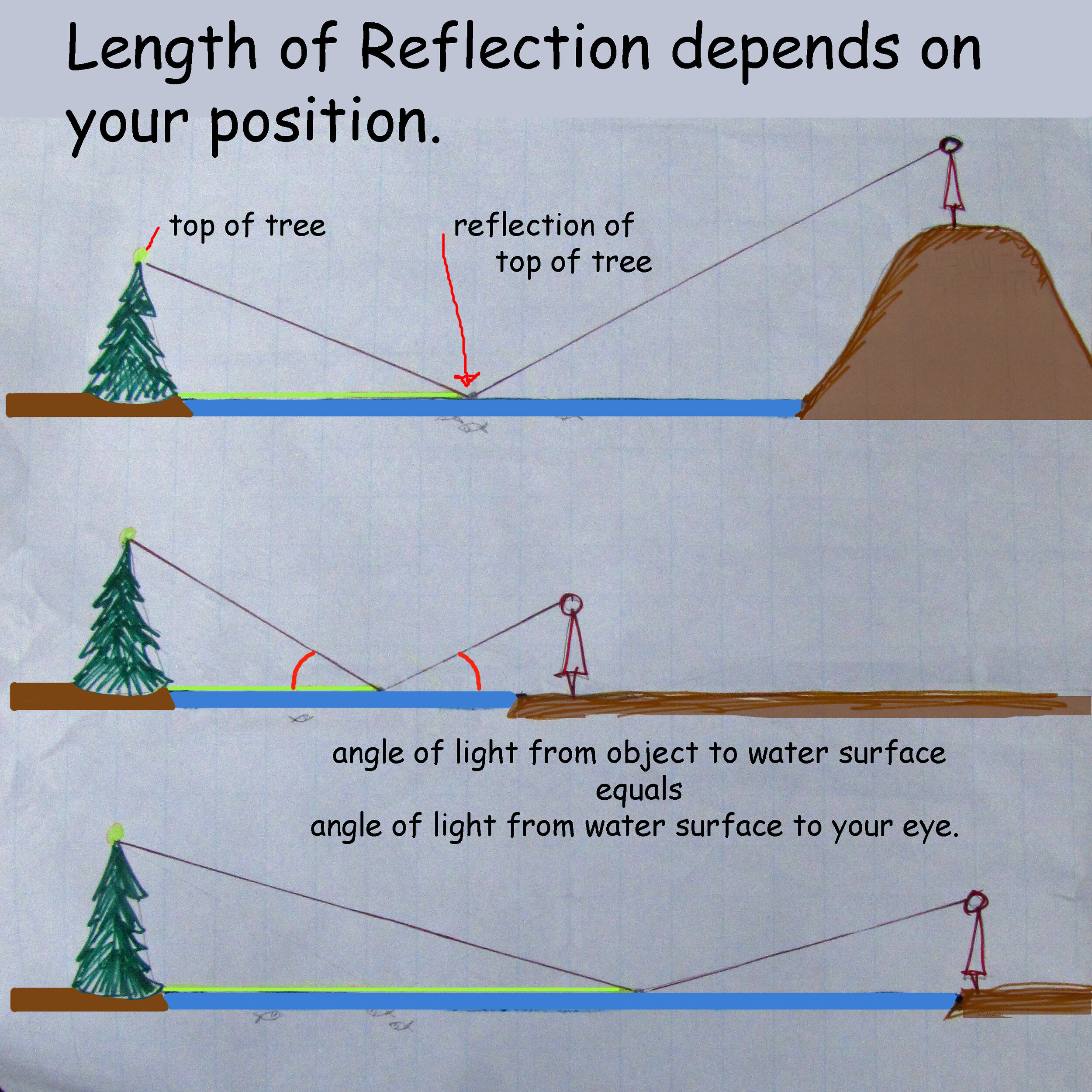Water Reflections
Learning to paint reflections in water calls us to see what objects really look like! Here are some things to look for.
Make sure your horizon line is level.
Reflections come directly toward the viewer. (This is different from shadows!) You can draw a vertical line on your canvas or paper to make sure your reflections are straight up and down. (Note: On really wide paintings such as murals, things get a little complicated if people are going to view them up close.)
o Any given point on an object reflects directly below itself. If an object leans left, its reflection also leans left. If it leans right, its reflection leans right.
Light bounces off a given point on the object – like the top of a tree - to the water at the same angle as from that point in the water (top of the tree reflection) to your eye.
o The length of the reflection is determined by your position relative to the object being reflected.
o The higher you are above the water, the shorter the reflection will be, compared to the object being reflected.
o The closer you are to the object, the shorter the reflection will be.
o The farther you are from the object, the longer the reflection will be.
o The object and its reflection will have an identical height only if your direction of view is nearly parallel to the water surface.
Reflections have less contrast than the objects being reflected.
o Whatever is dark on land will be lighter in the water.
o Whatever is light on land will be darker in the water.
o Colors become less saturated in water reflections. Even white objects will need to be grayed down in the reflection.
o Leave details out. Blurs of color can work.
o Water is typically darker than the sky it reflects, because water absorbs light.
Exact, hard edges in water reflections can look odd. Be aware that horizontal objects often have ‘vertical smearing’ in their water reflections.
o Vertical edges - like for bridge supports or the sides of the setting sun – have the same left-to-right location in the reflection. This makes the side edges of the reflection relatively crisp.
o Horizontal objects – like the top and bottom of the sun or a bridge span – are reflected, those tops and bottoms often have smeared-out vertical locations in the reflection.
Helpful resources: Jennifer Branch, Johannes Vloothuis, www.handprint.com, Zoltan Szabo.
